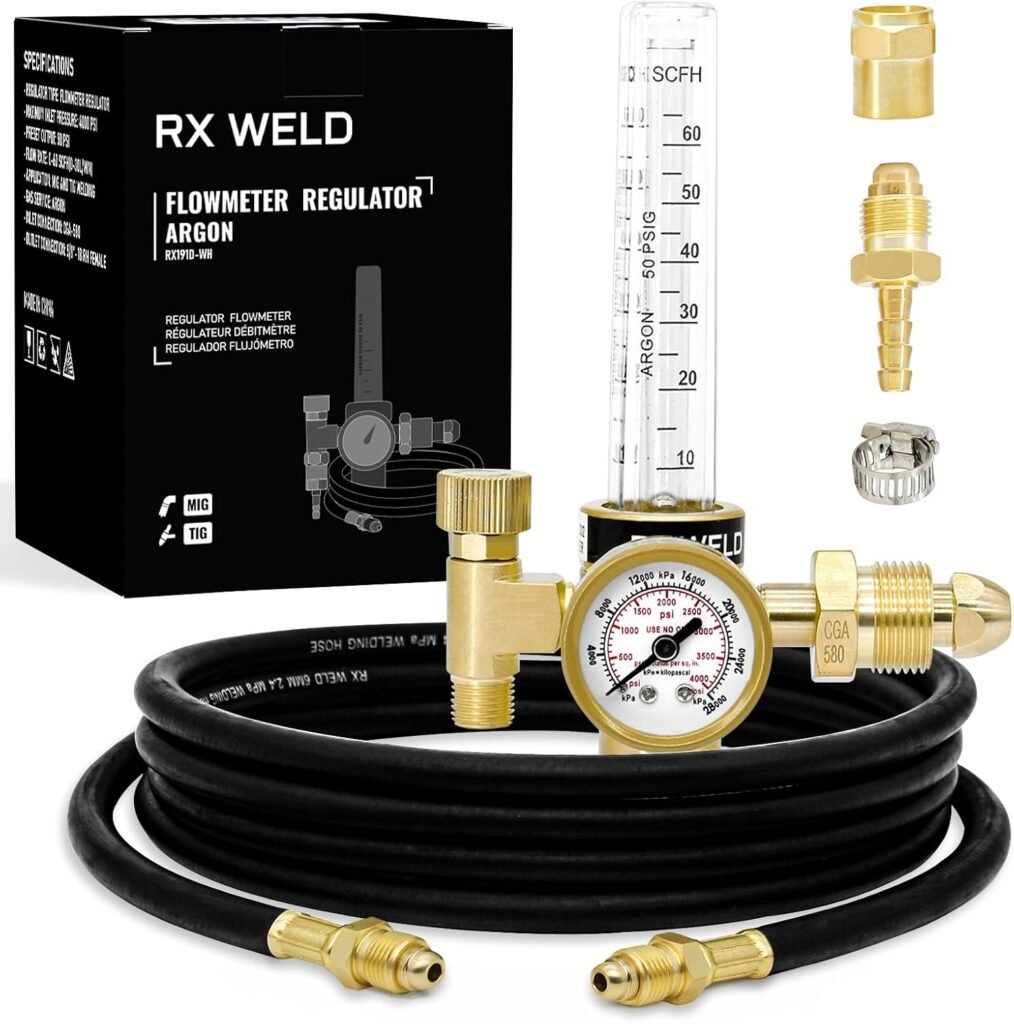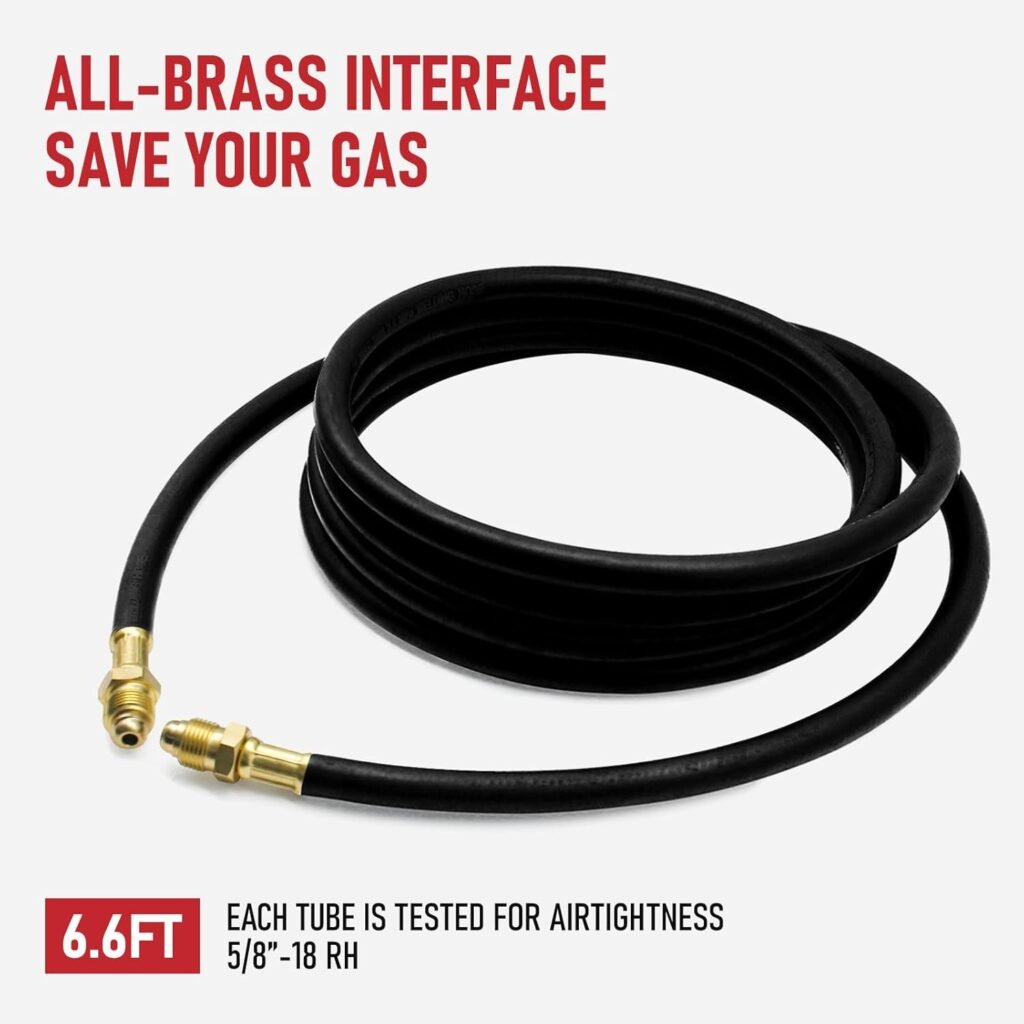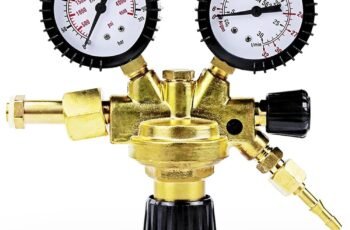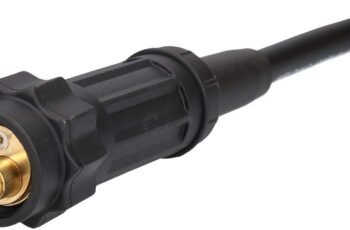Ad Blocker Detected
Our website is made possible by displaying online advertisements to our visitors. Please consider supporting us by disabling your ad blocker.
Looking for a reliable argon regulator and flow meter that fits both MIG and TIG welding setups?
Product Overview: RX WELD Argon Regulator Flow Meter Gas Regulator Gauge for Mig Tig Weld with Gas Hose Welding
You get a complete regulator/flowmeter kit intended for shielding gas control in MIG and TIG welding. The RX WELD unit combines a CGA-580 inlet, multiple outlet connector options, a brass body, and a 10–60 cfh adjustable flowmeter with a hose and clamp included.
What this product is designed to do
This regulator is designed to control and indicate shielding gas flow from standard argon, helium, or CO2 cylinders to your welding torch. It’s aimed at hobbyists and professionals who need a straightforward, budget-friendly way to meter gas for welding and other light gas-control tasks. You’ll find the ball-type flow indicator gives a simple visual reference for flow, while the brass construction aims to hold up in shop conditions.
Quick Specs
This short table gives you a compact view of the most important specs so you can quickly see whether it matches your setup.
| Feature | Specification |
|---|---|
| Compatible Valve Standard | CGA-580 inlet connector |
| Outlet Connectors | Female 9/16″ x 18 nut, Male 5/8″ x 18 fitting, Standard 1/4″ barbed fitting |
| Flow Range | 10–60 cfh (cubic feet per hour) |
| Construction | Brass body with glass/plastic flow tube |
| Hose Length | 6.6 ft (approx. 2.0 m) |
| Included Accessories | 1 regulator, 1 6.6 ft hose, 1 hose clamp, mounting nut |
| Typical Applications | MIG and TIG welding, argon/helium/CO2 shielding |
| Manufacturer Support | RX WELD customer service (contact within 24 hours according to listing) |
Compatibility and Fit
You want to know whether it will physically connect to your tanks and torches, and the RX WELD unit is designed to be flexible.
Tank Compatibility: CGA-580
This regulator includes a CGA-580 inlet which is the standard for many argon and argon-mixture cylinders used in welding. If your tank uses CGA-580, this regulator will thread directly onto the cylinder without the need for adaptors. If you’re unsure whether your tank is CGA-580, check the cylinder valve or your gas supplier documentation.
Outlet Options and Adapters
RX WELD provides flexibility with multiple outlet options so you can work with different torch fittings. The kit includes adapters that let you connect to either a female 9/16″ x 18 nut or a male 5/8″ x 18 fitting, plus a 1/4″ barbed fitting for the hose. That means you can adapt to most standard torches and hoses without buying additional fittings.
Build Quality and Materials
You want durability and reliability, and this unit leans toward the robust side for its price point.
Brass Construction
The main body is brass, which is common in regulators because it resists corrosion, handles mechanical wear well, and performs across a wide range of shop conditions. You’ll find brass preferable to zinc or plated cast alternatives when you expect regular use.
Flow Tube and Gauge
The flowmeter uses a clear tube with a ball indicator that rises and falls with flow. The tube appears to be a durable plastic or glass composite which lets you read flow easily. The markings run from 10 to 60 cfh; for precise reading, look at the middle of the ball or the tip depending on the flowmeter design.
Performance: Flow Accuracy and Usability
You’re buying this to control shielding gas consistently. Here’s what to expect in typical use.
Flow Range and Practical Application
The 10–60 cfh range covers common flows for both TIG and MIG welding. For TIG welding, you’ll typically run 6–25 cfh depending on torch size and gas shielding needs; for MIG, flow is usually in the 20–40 cfh range depending on gas type and nozzle size. Note that the regulator indicates from 10 cfh, so for very low flows below 10 cfh you won’t be able to measure with fine resolution using this unit.
Accuracy for Welding
This is an economical mechanical flowmeter and it gives repeatable, usable flow readings for welding. It won’t match high-end industrial mass flow controllers for absolute precision, but it provides enough accuracy to set and monitor gas flow for consistent welds. If you require exact cfh within a few percent for scientific or calibration tasks, you’ll need a higher-spec metering device.
Response and Adjustment
The flow adjustment knob provides smooth control so you can settle at a steady flow. The ball indicator responds quickly when you change the setting, so you can see if a leak or backflow affects your gas. The unit generally achieves stable readings when gas is flowing and the torch is in typical use.
Installation and Setup
You’ll want a smooth setup so you can start welding quickly. Follow these general steps to install the RX WELD regulator safely and correctly.
Unpacking and Inspecting
When you open the package, verify that you received: the regulator body, a 6.6 ft hose, one hose clamp, and a mounting nut. Check for damage, any foreign objects in the regulator ports, and that the flow tube isn’t cracked. If anything looks damaged, contact the seller before installation.
Mounting and Connecting to the Tank
- Ensure the cylinder valve is closed and the cylinder is secured upright.
- Clean the valve outlet to remove dust or debris.
- Thread the CGA-580 inlet of the regulator onto the cylinder valve. Hand-tighten, then use a wrench per the regulator manual to snug — do not over-tighten.
- Slowly open the cylinder valve and observe the regulator for leaks or unusual noises. If you smell gas or hear hissing beyond expected, close the valve and check connections.
Connecting Hose and Torch
- Attach the 1/4″ barbed fitting to the hose and secure with the included clamp.
- Connect the other end to your torch or mixer fitting using the appropriate adapter (9/16″ x 18 or 5/8″ x 18) if needed.
- Open the regulator and set the desired flow using the adjustment knob while watching the ball in the flow tube.
Using It for MIG Welding
You want steady shielding gas coverage to reduce porosity and ensure sound welds in MIG.
Typical MIG Flow Rates and How to Set Them
MIG welding flow rates vary with wire type and nozzle, but typically you’ll set between 20–40 cfh for short-circuit transfer and 30–50 cfh for more turbulent transfer modes or larger nozzles. Start at a moderate flow (e.g., 25–30 cfh) and adjust while welding until you see a stable arc and minimal spatter or oxidation on the bead.
Stability and Torch Behavior
The flowmeter’s ball gives you a clear visual cue of gas flow at the torch. If you notice the ball fluctuating while you weld, check for leaks, a nearly empty cylinder, or an incorrect regulator pressure setting. Consistent readings mean your shielding gas delivery is steady, which improves bead appearance and penetration consistency.
Using It for TIG Welding
TIG welding often requires lower and more precise gas flow than MIG, so read this section carefully.
Typical TIG Flow Rates and Tips
For TIG, you’ll often run 6–20 cfh depending on torch size, cup diameter, and whether you weld in gas-sensitive positions. The RX WELD starts reading at 10 cfh, so for very low flows you may be at the lower limit of the readable scale. If you frequently use very low flows, consider a regulator designed for lower-flow visibility. Still, for most general TIG work, the 10 cfh minimum is acceptable.
Purge and Backflow Considerations
When TIG welding, you sometimes purge gas through tubing or a purge kit. The RX WELD can handle standard purging operations, but if you’re purging very slowly or using complex purge setups, monitor the ball carefully and verify that backflow or pulsation from the torch gas lens isn’t causing unstable readings.
Hose and Fittings: Practical Notes
You’ll be working with the included hose and connectors, so here’s what you need to know about durability and compatibility.
Hose Quality and Length
A 6.6 ft hose gives you decent mobility around a small to medium workspace. The hose is serviceable for shop use; if you run long runs or have high abrasion exposure, plan to replace or protect the hose with conduit. Inspect periodically for kinks and cracking. Heat and sunlight accelerate hose aging, so store it indoors when not in use.
Fitting Options and Flexibility
The multiple outlet connectors are a practical feature. If you own a variety of torches or mixers, the included fittings reduce the need for extra purchases. Make sure threads are matched and sealed with appropriate thread sealants for gas fittings (do not use Teflon tape on cylinder outlet threads; follow cylinder/regulator safety guidelines).
Safety and Best Practices
You want safe gas handling; the regulator can help but you must follow safe practices.
Cylinder Handling and Leak Checks
Always secure cylinders upright and keep valve caps on when cylinders are moved. After installing the regulator and opening the valve, perform leak checks with a soapy water solution or approved leak detector around fittings. Tighten connections if bubbles appear. If you detect a leak at the regulator inlet body, remove the regulator and have it inspected; do not attempt to repair cylinder valves yourself.
Pressure and Overpressure Protection
The regulator reduces cylinder pressure to usable working pressure and meters flow, but it’s not designed as a primary overpressure protection device for downstream equipment. Use appropriate regulators and check manufacturer guidance for maximum inlet/outlet pressures. If you need overpressure protection, consider a regulator with built-in safety relief or add external protective devices.
Maintenance and Care
You want the regulator to last. Regular care extends life and reliability.
Routine Checks
Inspect the regulator for corrosion, cracked flow tube, or damaged gauge seals periodically. Check hose clamps and the hose condition. Make a schedule: quick visual checks before each welding session and deeper inspections monthly if you weld often.
Cleaning and Storage
Keep the flow tube clean for accurate reading; wipe it with a soft, dry cloth. When not in use, leave the regulator off the cylinder and store in a dry, dust-free area. Avoid exposing brass surfaces to corrosive chemicals and high humidity.
Troubleshooting Common Issues
If something goes wrong, this section helps you troubleshoot before seeking replacement or professional repair.
Ball Not Moving or Flow Tube Stuck
If the ball doesn’t move when you open gas, ensure the cylinder valve is open and there’s gas in the cylinder. Check for blocked flow or kinked hose. If the ball is stuck due to debris, remove the regulator and get it serviced or replaced—don’t force the ball.
Leaks at Connections
If you find leaks at threaded connections, tighten the fittings per instructions. For leaks at hose barbs, re-clamp the hose and use a second clamp if needed. If the leak is at the inlet (cylinder-regulator) and tightening doesn’t fix it, remove and inspect for damaged O-rings or defective threads.
Inaccurate Readings
If readings seem inconsistent, purge and re-open lines carefully and re-check. Variability can be caused by low cylinder pressure, leaks, or a damaged flow tube. Verify with a backup meter if exact accuracy matters to you.
Pros and Cons
You want a straightforward list to weigh pros and cons.
Pros
- Affordable and complete kit with hose and clamp included.
- CGA-580 compatibility for common argon/mixture cylinders.
- Multiple outlet connections for broader torch compatibility.
- Brass construction for better durability than cheaper materials.
- Simple ball-type flowmeter that’s easy to read and adjust.
- Good for both MIG and TIG general welding applications.
Cons
- Minimum readable flow is 10 cfh, which limits very-low-flow TIG purging or micro-flow tasks.
- Not as precise as premium industrial flow controllers.
- Flow tube may be more susceptible to cracking if mishandled compared to thicker glass designs.
- No certified calibration certificate included for critical processes requiring traceable accuracy.
Comparison with Alternatives
You want perspective on how this kit stacks up against other options.
Basic Economy Regulators
Compared to the cheapest regulators, RX WELD offers better build material (brass) and more fitting options. Those cheaper units often use inferior metal or plastic parts, fewer outlet fittings, and may not include a hose.
Premium Industrial Regulators
Higher-end regulators and mass flow controllers give much tighter accuracy, digital readouts, and better low-flow performance. They’re more expensive and often target industrial labs or production environments. The RX WELD sits in a middle ground—good for most welding tasks without the premium price.
Who Should Buy This
You should consider this product if you’re a hobbyist, small-shop welder, or budget-minded professional who needs a flexible, reliable gas control solution for common MIG/TIG tasks. If you require ultra-precise low flows or certified calibration, look at higher-spec units.
Packing, Shipping and Support
You’ll want to know what to expect when ordering.
Packaging and Included Parts
The package typically includes the regulator, a 6.6 ft hose, a hose clamp, and a mounting nut. RX WELD lists that they provide more complete accessories so you can use the unit confidently out of the box.
Customer Support and Returns
The seller notes 24-hour response for parcel questions. If you have any questions about the parcel you received, contact the seller for support. Keep your purchase confirmation and inspect items on arrival to streamline returns if necessary.
Practical Tips and Best Practices
Small tips save time and improve welding results.
Setting Flow Before Welding
Set a base flow with the torch idle and then make small adjustments while welding until you get a stable puddle and clean bead. Remember that welding position, travel speed, and joint geometry affect gas requirements.
Avoiding Contamination
Keep the regulator and fittings free from oil or grease, especially if you ever plan to use oxygen (this unit is intended for argon/helium/CO2; never mix or use with incompatible gases). A contaminated regulator can pose safety hazards.
Using Secondary Check Meters
If you’re doing critical welds, add a secondary flow meter or use a simple flow checker to confirm readings from time to time. This is a low-cost way to verify performance.
Frequently Asked Questions (FAQ)
You want quick answers to common concerns about the unit.
Can this regulator be used with CO2 and helium?
Yes. The regulator is compatible with argon, helium, and CO2 cylinders using a CGA-580 inlet. Verify cylinder valve standards and gas compatibility prior to use.
Will it fit my torch?
The kit includes multiple outlet connectors: female 9/16″ x 18, male 5/8″ x 18, and a 1/4″ barbed fitting for the hose. These cover most torch and mixer connections; check your torch threads to ensure fit.
Is the flow reading precise enough for TIG?
It’s precise enough for standard TIG welding in most hobbyist and general professional applications. If you require readings below 10 cfh or traceable calibration, consider a specialty low-flow or calibrated instrument.
How durable is the hose?
The 6.6 ft hose is adequate for typical shop use. For high-abrasion environments, long runs, or outdoor exposure, consider replacing with heavier-duty hose or protecting the hose with conduit.
Final Thoughts and Recommendation
You’re getting a practical, budget-friendly regulator and flowmeter that covers the most common shielding gas needs for MIG and TIG welding. The RX WELD Argon Regulator Flow Meter Gas Regulator Gauge for Mig Tig Weld with Gas Hose Welding offers good build quality with brass construction, flexible outlet options, and a usable 10–60 cfh flow range. It’s particularly well-suited if you want a ready-to-use kit with hose and clamp included without spending on high-end industrial metering equipment.
If you typically weld at flows above 10 cfh and want a reliable, cost-effective way to manage your shielding gas, this unit is a strong option. If your work routinely requires very low-flow control, certified calibration, or ultra-precise metering, you may want to consider a specialty low-flow regulator or a mass flow controller instead.
If you have particular use scenarios or equipment you want to match this to, tell me your torch model, cylinder type, or typical welding process and I’ll provide tailored setup steps and recommended flow settings.
Disclosure: As an Amazon Associate, I earn from qualifying purchases.







